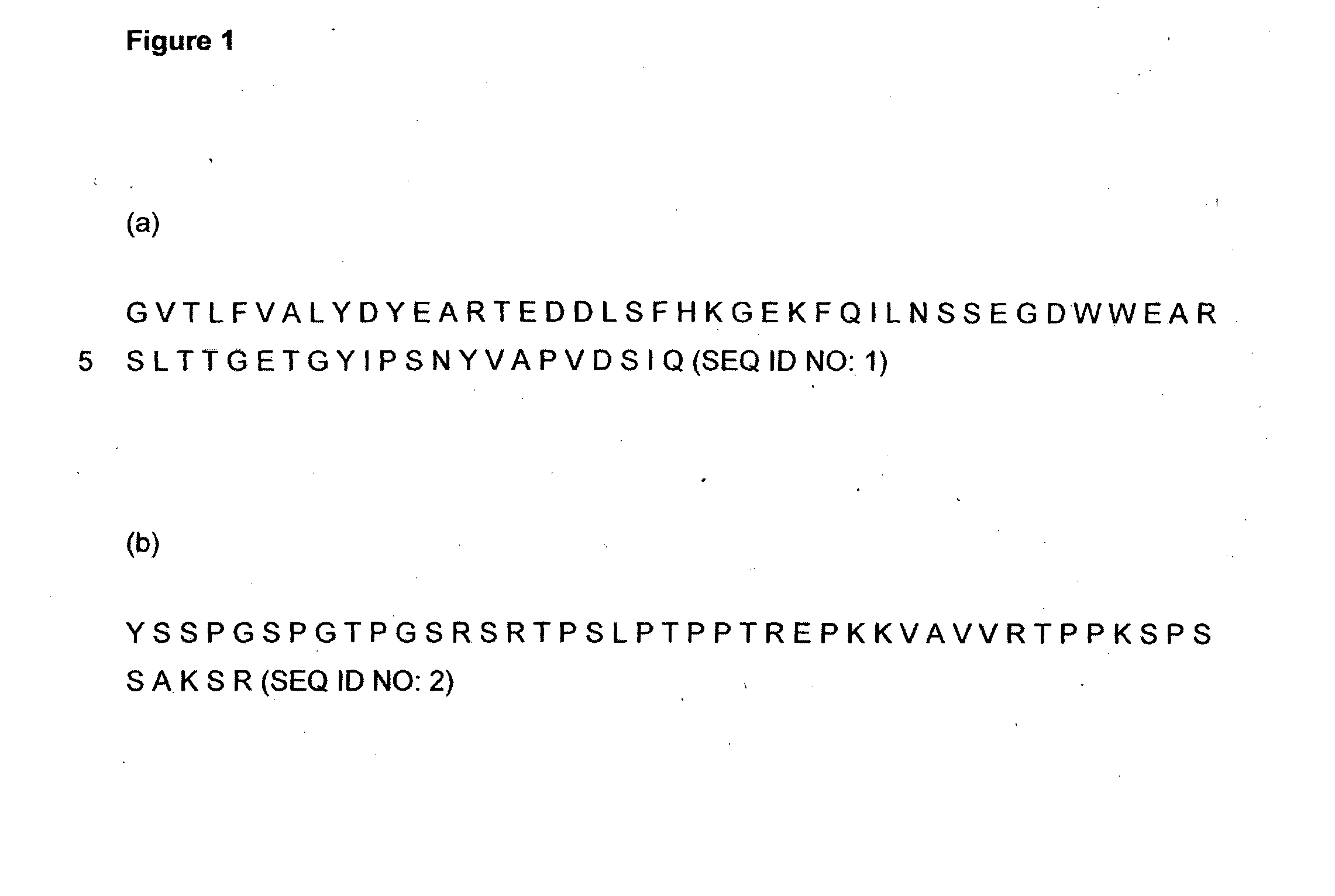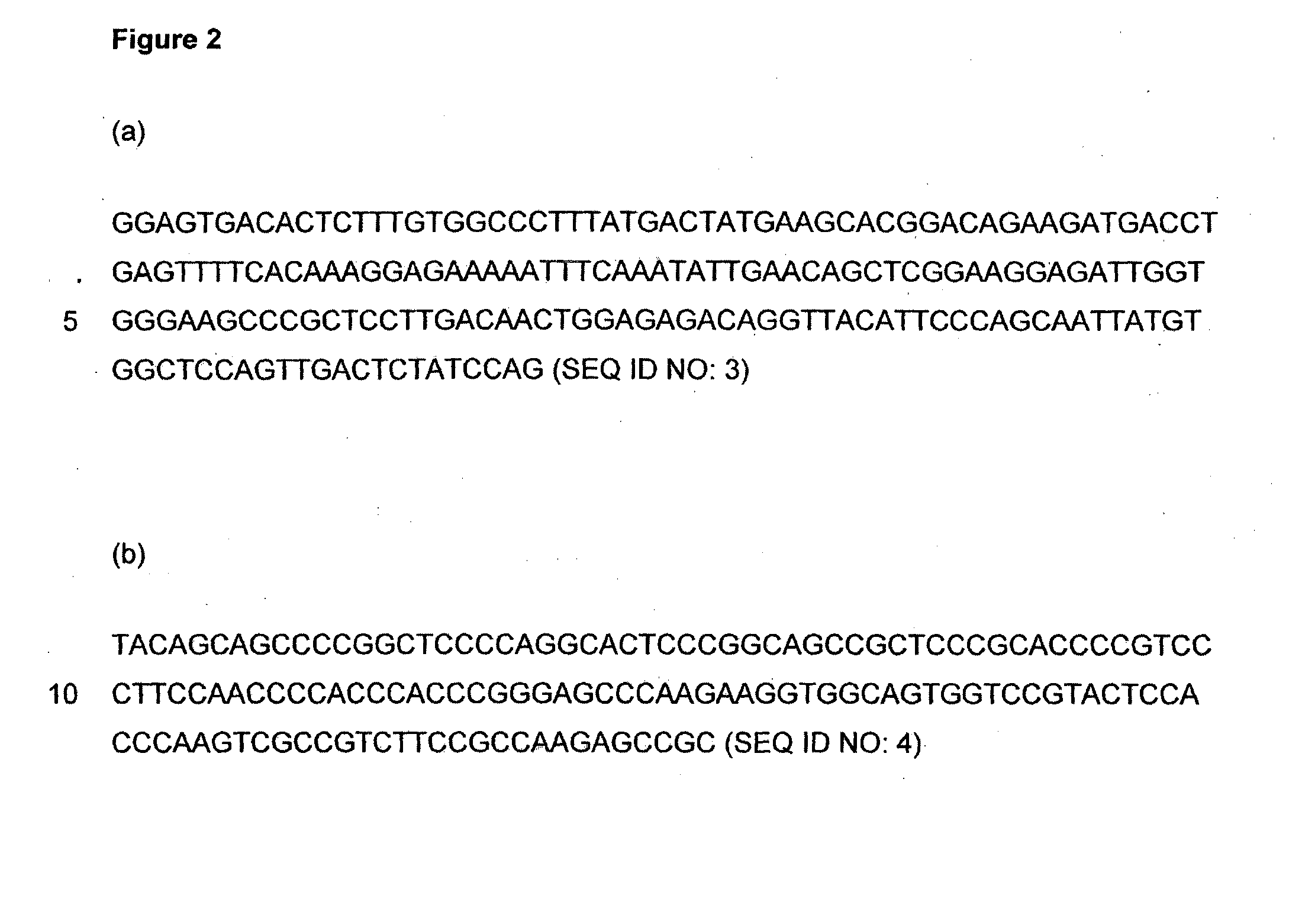Assay and method for identifying compounds that inhibit excitotoxic signals
a technology of excitotoxic signals and compounds, applied in the field of detection and method of identifying compounds that inhibit excitotoxic signals, can solve the problem that signal transmission remains possible without adequate delivery
- Summary
- Abstract
- Description
- Claims
- Application Information
AI Technical Summary
Benefits of technology
Problems solved by technology
Method used
Image
Examples
example 1
[0107]This Example describes the generation of expression vectors containing N-GFP and C-GFP fused to a portion of either Fyn or Tau and the transfection of cells with those vectors.
[0108]In preparing expression vectors encoding N-GFP and C-GFP fused to a Fyn or Tau protein the inventors had to take into consideration a number of factor including, the amino acid sequence and length of the Fyn and Tau protein, whether to fuse the GFP component to either the N or C-terminus of the Fyn or Tau protein, whether to fuse the N- or C-GFP to Fyn or to Tau, and the presence and length of a flexible linker between the GFP component and Fyn or Tau protein.
[0109]N-GFP and C-GFP vectors were generated according to Ghosh et al., J Am Chem Soc.
[0110]Generation of N-GFP: cDNA encoding aa 1-158 of GFP (FIG. 3 (a) amino acid sequence and FIG. 3(b) nucleotide sequence) were cloned into pLVX (Clontech) by PCR using EcoRI (G′AATCC) and XbaI (T′CTAGA). A Kozac sequence ACC was also present. A nucleotide s...
example 2
[0122]This Example describes the proof-of-concept that the assay can be used to identify compounds that reduce the interaction of Fyn with Tau.
[0123]Cells generated by the methods described in Example 1 were grown till confluent in 96-well plates and then the fluorescence was measured in a 96-well plate reader (Omega, BMG) or by via fluorescence microscope. The cells were then incubated with 200 nM of the Tat-7PXXP peptide for 1 hour at 37 degree Celsius. The fluorescence was again measured in a 96-well plate reader (Omega, BMG) or via a fluorescence microscope.
[0124]The fluorescence of the transfected cells was negligible in the presence of the Tat-7PXXP peptide (FIG. 5). The Tat-7PXXP peptide has the Tat sequence, for cell permeability, linked to Tyr Gly Arg Lys Lys Arg Arg Gln Arg Arg Arg Thr Pro Pro Lys Ser Pro Ser Ser (SEQ ID NO: 21).
[0125]A general schematic of the assay described in the Examples is shown in FIG. 6.
[0126]All publications and patents cited in this specification...
PUM
| Property | Measurement | Unit |
|---|---|---|
| pH | aaaaa | aaaaa |
| pH | aaaaa | aaaaa |
| temperature | aaaaa | aaaaa |
Abstract
Description
Claims
Application Information
 Login to view more
Login to view more - R&D Engineer
- R&D Manager
- IP Professional
- Industry Leading Data Capabilities
- Powerful AI technology
- Patent DNA Extraction
Browse by: Latest US Patents, China's latest patents, Technical Efficacy Thesaurus, Application Domain, Technology Topic.
© 2024 PatSnap. All rights reserved.Legal|Privacy policy|Modern Slavery Act Transparency Statement|Sitemap



